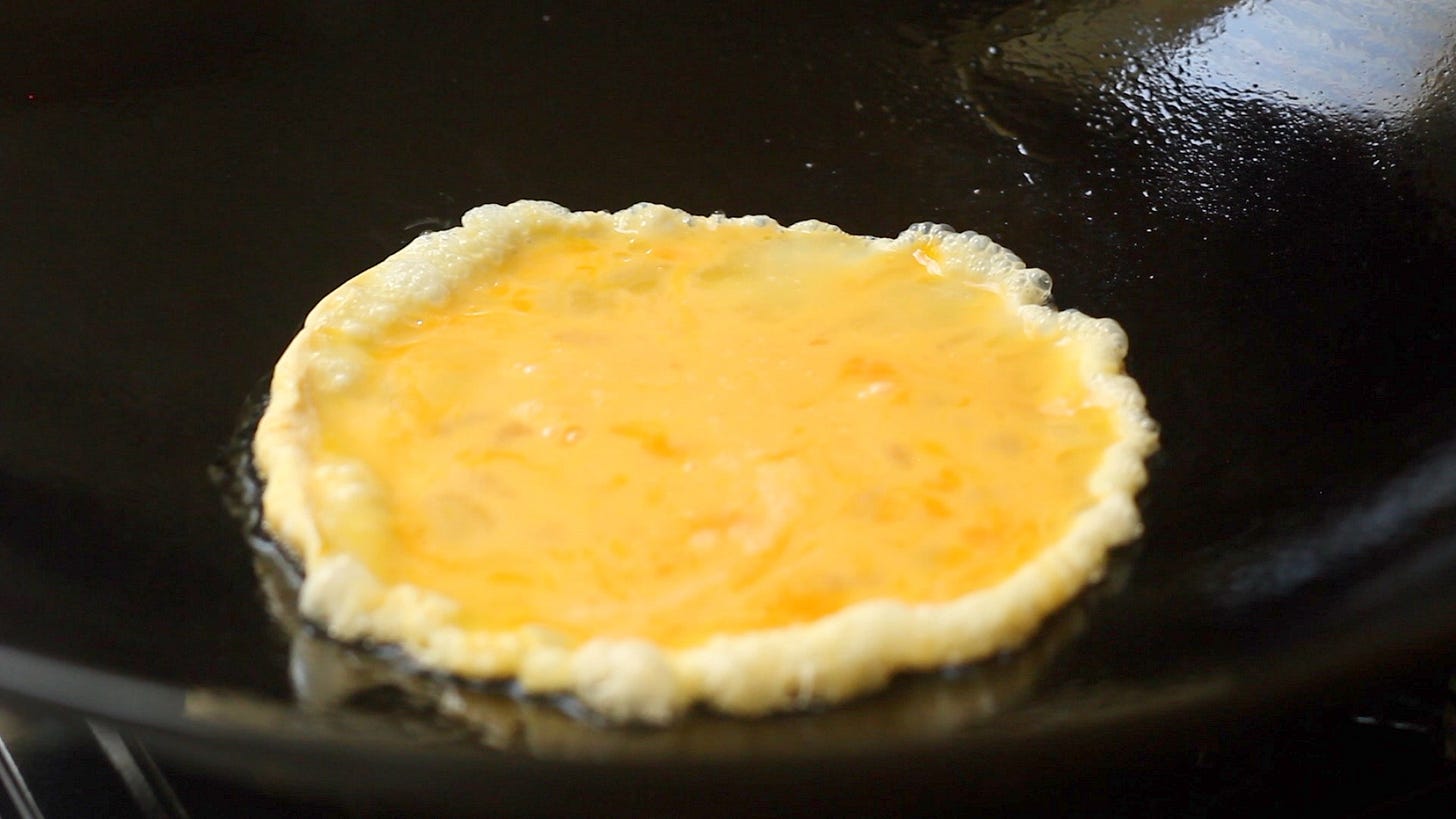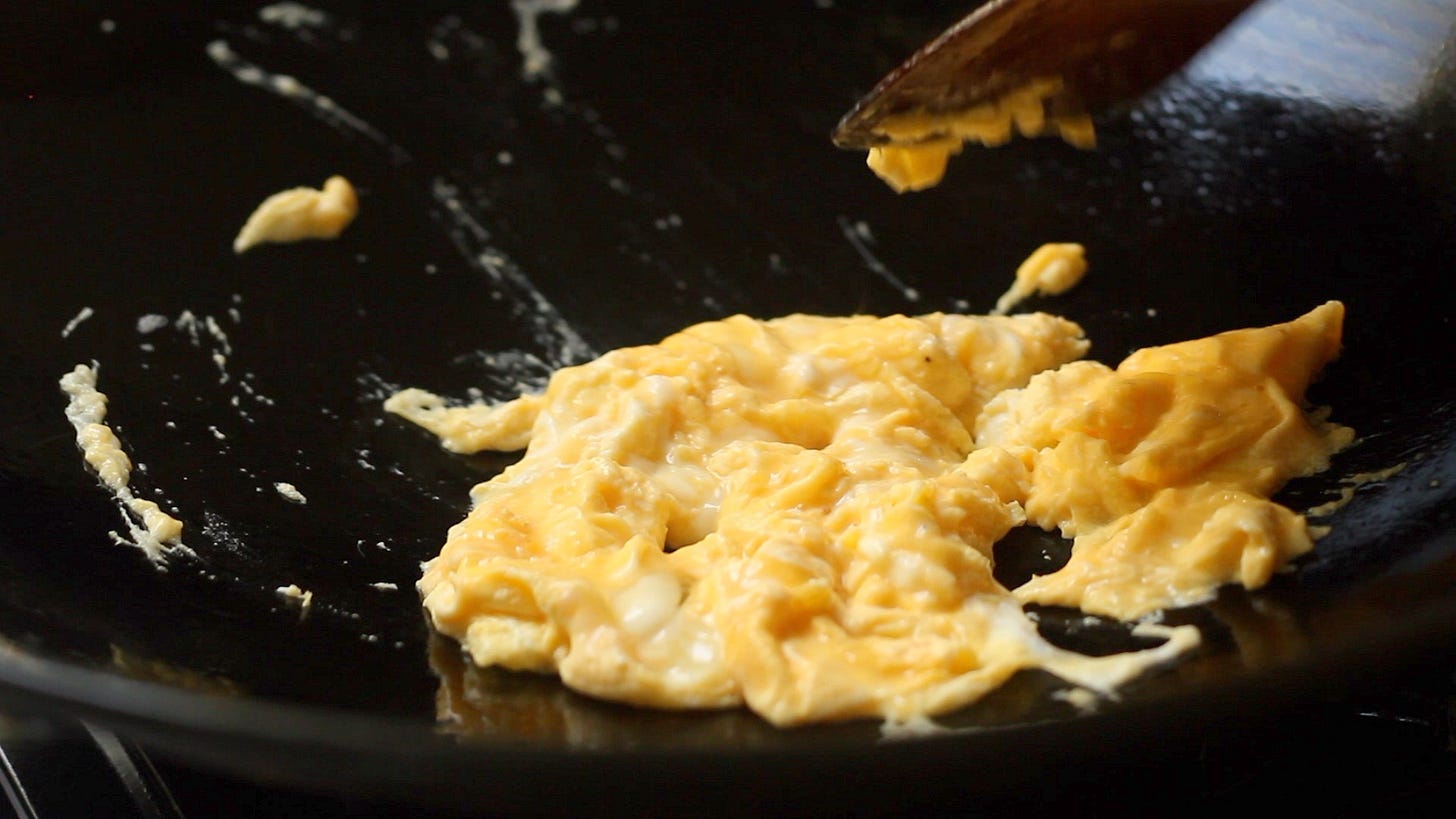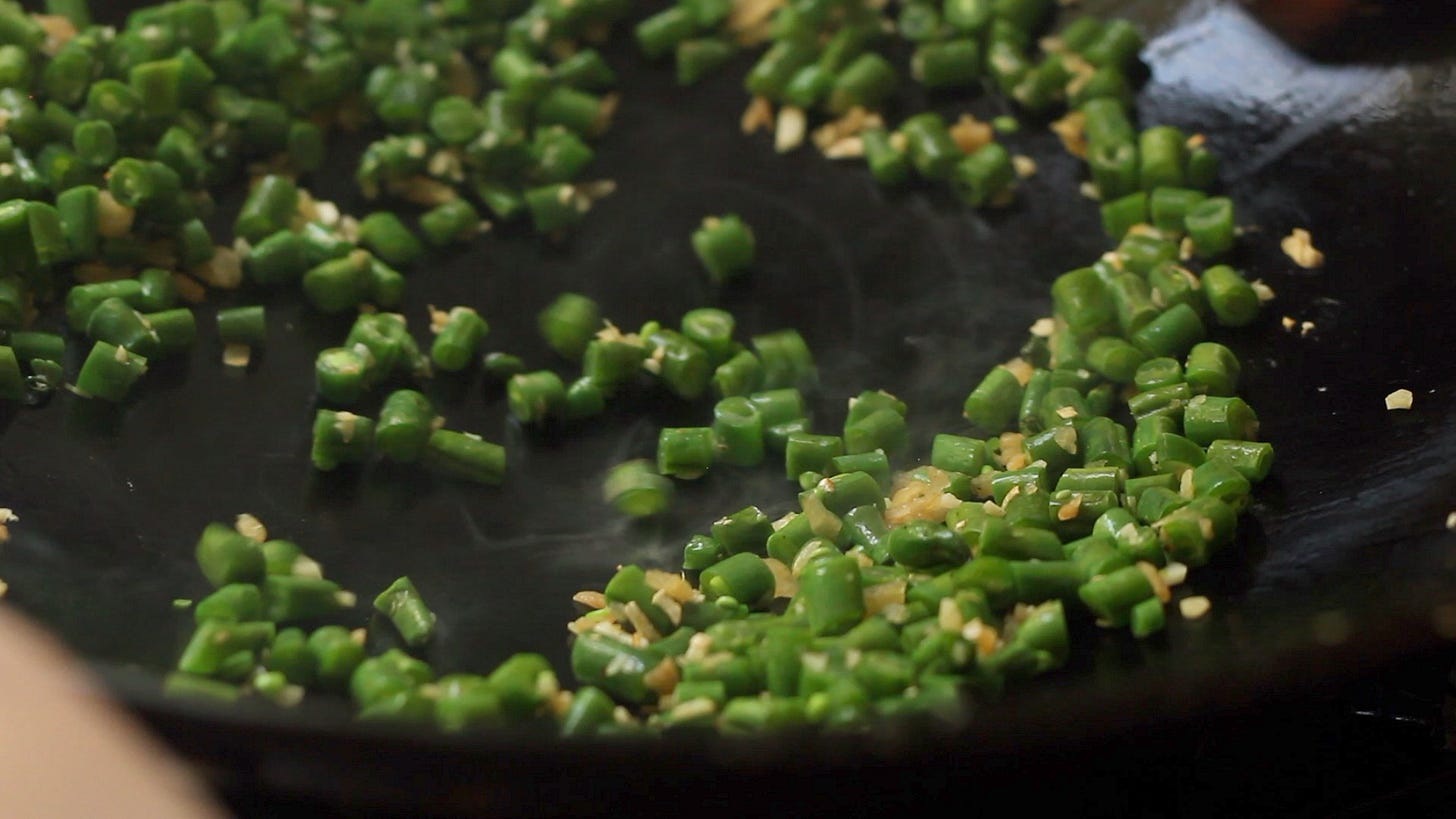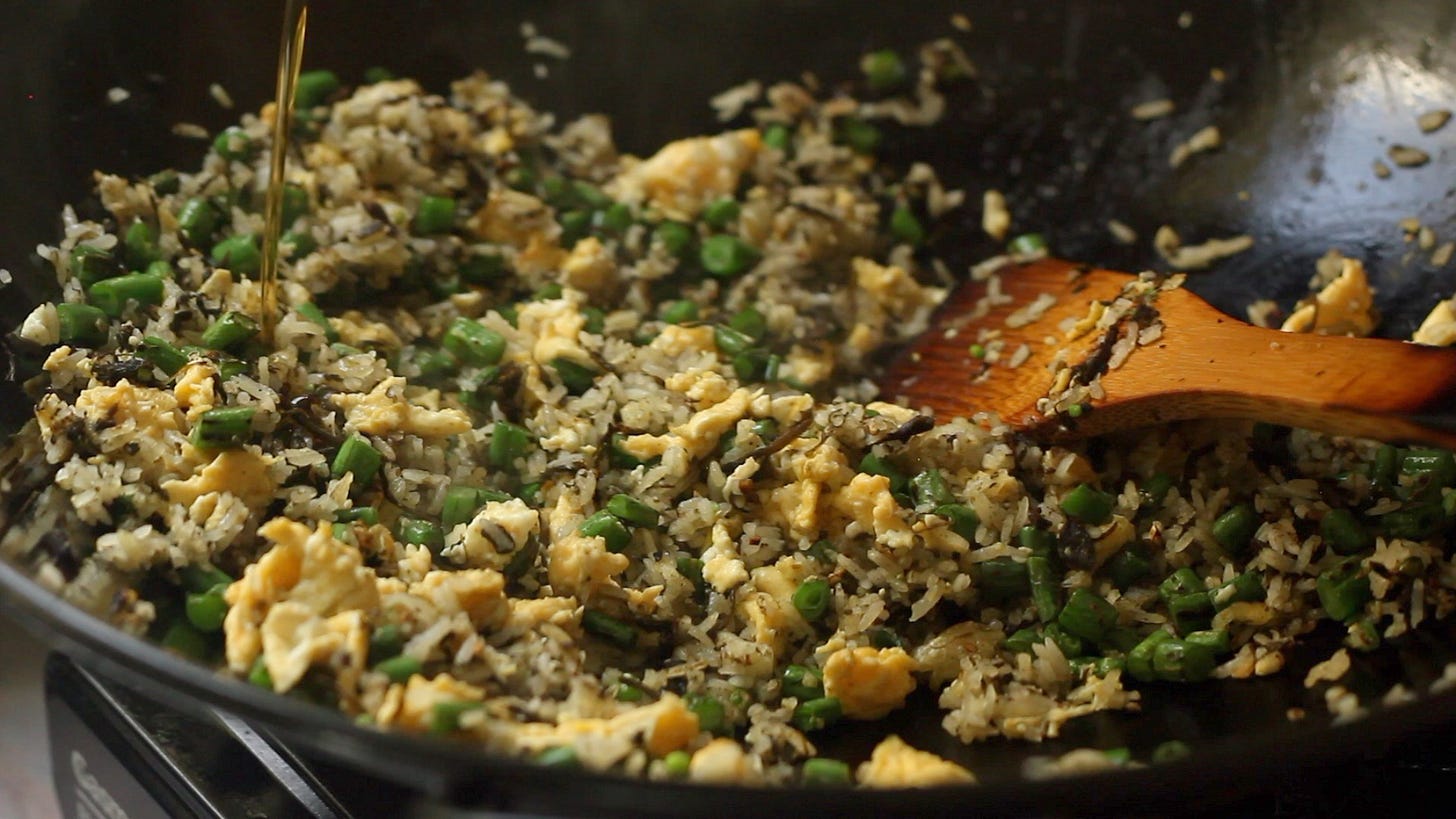Welcome back to the final instalment of fried rice paradise, where we explore the intricacies of making a good bowl of fried rice at home! If you are new here, or have not read the previous newsletters, you can do so via the links below:
Part I: Rice and egg
Part II: Wok hei and the right cookware
Part III: Putting it all together
Imagine this: the day-old rice has been freshly fried (see Part I on prepping day-old rice, and Part II on frying it), and all your ingredients are laid out in front of you and ready to go (see Part I on the importance of mise). So now, all we have to do is to put the dish together in the wok.
In Part I, we have gone over the different routes you can take with the egg. I like to fry my egg in advance, and add it right at the end. When frying eggs, there is nothing worse than when it sticks to your pan. This is where the ‘hot wok cold oil’ 热锅冷油 technique comes in, which helps in ensuring a non-stick surface.
First, heat a liberal amount of oil in a wok - this helps to gauge that the wok is heated to the correct temperature, and seals off the porous metal, making the pan even more non-stick. Take the temperature of the oil, aiming for above 200C. A note on fat: please use something with a high smoke point (no butter, no olive oil).
This hot oil is not used for stir-frying because any chopped garlic or egg added to it would potentially scorch. Pour the oil out of the wok and into a bowl - it can be kept for future use. Add some room temperature oil to the preheated wok and immediately add your eggs. If the wok was preheated adequately, you would see a frilly edge immediately start to form.
Scramble the eggs on low heat until no longer runny, but still moist. Remove from the wok immediately to avoid overcooking. Set aside - we will add this to the fried rice later.
To the wok, we add garlic and chye poh (preserved radish). The fermentation process lends the radish so much savoury depth and makes it especially great for vegetarian dishes like this. There are two types of chye poh - sweet and salty. You can use either, just remember to rinse the salted chye poh first because it can be unbearably salty.
When it comes to ingredients to add to fried rice, you can go as simple or as luxe as you want. The only thing to remember is to avoid ingredients with lots of liquid in them because, with fried rice, you are stir-frying, not steaming or boiling. Also, avoid ingredients that will bring down the temperature of the wok dramatically, such as frozen vegetables. If you want to use frozen vegetables, the best thing to do is to blanch and drain them in advance. I’m using French beans here which I love - they seem to be more tender, juicy, and sweeter than long beans.
Usually, fried rice has ingredients that are packed with umami such as Chinese ham, Chinese sausage, dried scallops, dried shrimp, and XO sauce. I’ve heard that Japanese fried rice uses hon dashi powder, which works like MSG but with a beautiful oceanic flavour. Yangzhou fried rice, arguably the most famous type of fried rice, uses a combination of dried shiitake mushrooms, dried scallops, and Chinese ham. For olive fried rice, the main source of umami comes from olive vegetables. You can find this in blue-lidded jars/ containers at Asian grocers, and has an appearance akin to seaweed.
Now return the rice to the wok, and because it has already been pre-fried in the cast-iron pan, we are not worried about it lacking wok hei or not being fried sufficiently. All we are doing here is tossing it thoroughly with the rest of the ingredients in the wok.
The egg goes in last and, again, it is all about breaking it up gently into large curds and tossing it with the rice. More like fluffing than tossing because you want to maintain large egg curds and long rice grains.
Turn off the heat, and as a final touch, add a drizzle of sesame oil and soy/ fish sauce if you think it needs the extra seasoning. Sesame oil is added at the end so it does not burn. Same goes if you want to add butter to whatever fried rice you’re making.
That’s really it! Making restaurant-style fried rice at home is not as difficult or out-of-reach as you think - all it takes is understanding a few basic principles. I know that it’s quite a lot of information to digest, so if you want to see it in action and put ladle to wok, then join our fried rice cook-along tomorrow (only for paying members)! Members will also be able to view the video tutorial and recipe for this dish.
Otherwise, I hope this newsletter series has enriched your understanding of fried rice, and that you’ll put these tips to use in your own home! 🧚♂️
Olive Fried Rice
Serves 2 (If cooking for more than 2, I recommend cooking the recipe in batches)













